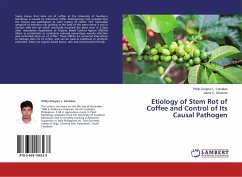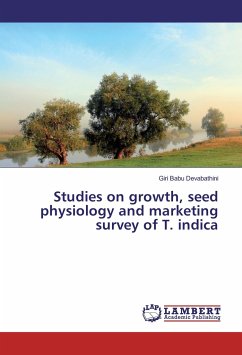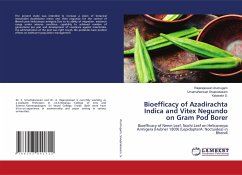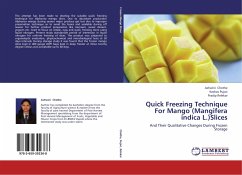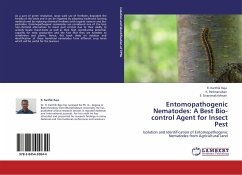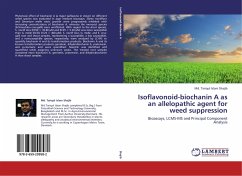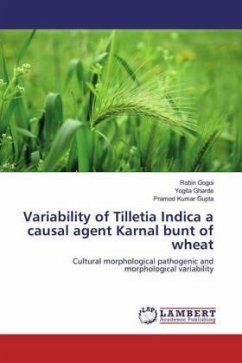
Variability of Tilletia Indica a causal agent Karnal bunt of wheat
Cultural morphological pathogenic and morphological variability
Versandkostenfrei!
Versandfertig in 6-10 Tagen
36,99 €
inkl. MwSt.

PAYBACK Punkte
18 °P sammeln!
Bread wheat (Triticum aestivum L.) is the main staple food crop and a major source of nutrition for the people of India. It is grown in winter months from November. Many factors contribute to low yield in India, diseases being one of them. Karnal bunt (partial bunt) of wheat caused by Tilletia indica (Mitra) Mundkur causes considerable economic losses in the yield of wheat The fungus attacks the wheat crop booting stage in February and March which is the susceptible stages of the host. The disease not only reduces the weight of grains but also deteriorates its quality and makes it unacceptable...
Bread wheat (Triticum aestivum L.) is the main staple food crop and a major source of nutrition for the people of India. It is grown in winter months from November. Many factors contribute to low yield in India, diseases being one of them. Karnal bunt (partial bunt) of wheat caused by Tilletia indica (Mitra) Mundkur causes considerable economic losses in the yield of wheat The fungus attacks the wheat crop booting stage in February and March which is the susceptible stages of the host. The disease not only reduces the weight of grains but also deteriorates its quality and makes it unacceptable for human and animal consumption. Emerging Infectious Diseases (EIDs) of plants because, (i) it has increased incidences, geographical distribution and host range, (ii) it has changed its pathogenesis, (iii) it has been newly evolved or newly recognized. The Karnal bunt is seed, soil and airborne and is greatly influenced by weather parameter. It is difficult to manage due to non-availability of resistant cultivars. Therefore, detail investigation on cultural, morphological, pathogenic and molecular variability in Tilletia indica, the causal agent of Karnal bunt of wheat was undertaken.






